
掌握慢节奏
MASTERING SLOWNESS
赛博空间主义
CYBER-SPATIALISM
WORKSHOP WITH
SALMA KHALED AND DARIUS GONDOR
4
? 9月11日
Experiment#4
视错觉运动-- 慢速运动--迷惑和错觉
(你和你的产品)
聚焦你选择产品的特别之处,一定要把动态摄影的速度慢下来,(这不是一部电影,是一个慢动作的摄影实验)记住这次工作坊的名称“掌握慢节奏”,将实验过程减慢速度,设置成黑白影像,用高对比度,以便给与你的内容更好的聚焦和给与观看者更多的解释的空间。观察的空间,再诠释的空间,想象的空间。在一个快节奏、大规模生产驱动的消费时代,时间是一种奢侈品。奢侈=思考的空间,时间和质量。而它的反面=快速“快&脏”Tiktok,人造的不自然的完美。
这次的目标是聚焦在观察者的眼睛上,错觉的眼睛,是这次的主要挑战。(看一下网站上开始的介绍文章)。在观看者看到或找到产品之前,他们应当花一些时间在视错觉上。观看者关于你捕捉的感知是这次视错觉的延伸。也将作为下一次视频的反馈。想想你的产品是如何被用户/观众感知的。关于你的产品设计,你最希望用户看到的是什么?你的产品有什么不同?你们产品概念背后的故事是什么?把你的产品的故事想象成诗歌。用最少的词汇把核心的感觉讲出来。什么形容词最能描述你的产品?重还是轻?大还是小? 统治的还是柔顺的(融入环境还是从环境中凸显的)?…
你可以决定作为设计师的你是否被包含在这个慢镜头的错觉中。如果是的。问问你自己你的产品的功能是什么?使用产品时,身体最常被激活的部位是哪个? 身体的哪个部位与产品的可用性有关。使用你的产品会触发什么样的感受? 当人与产品接触时,会有什么样的感觉?感受你的产品对用户的影响。
媒介:30-60秒的慢动作摄影,固定角度。如果能更好的表现你的视错觉,你可以最小限度的移动。3天的时间包括概念产生,实验,和每天的反馈通过一个小的实验成果。享受它
慢动作错觉实验的材料示例:
(你选择使用的材料会影响视觉错觉。它应该支持你的产品的功能独特性以及可以突出它的视觉特征的。)
投影仪
显示器
手电筒
纸
玻璃
镜子
Experiment #4 Practicing the power of perception
Submission due to Friday 2020-09-11
(3 days work, daily feedback)
Faking movement - SLOW-MOTION - confusion & irritation (YOU & YOUR PRODUCT)
Focusing on the characteristics of your chosen product. Sloooooowww downnnnnn your speed in the moving picture. (this is not a film but a slow-motion photography experiment 8-) Remember the title of this workshop «MASTERING SLOWNESS». This process of slowing down and working in black and white using high contrast, gives your content more focus and leaves the viewer/the observer more room for interpretation. Time for observation, time for reinterpretation, time for imagination. In a fast paced, mass-production driven era of consumption, think of time as a luxury. Luxury = space to think, time, quality. The opposite = fast «quick&dirty» Tiktok, plastic perfection.
The goal is to focus on the observer’s eye - the irritated eye - is your main challenge this time (relate to the intro text on the blog). The viewer should take some time before they can actually find and see the product within the optical illusion capture this time. The viewer’s perception of your capture becomes an extension of your illusion. Which will be the feedback of the group during the next video calls. Think of how your product is being perceived by users/viewers. What do you want the users to see the most Abouzeid your product’s design? What makes your product different? What’s the story behind your product’s concept? Think of your product’s storytelling through imagery like poetry. Using minimal words to transform a core feeling. What adjectives can describe your product the most? Heavy or light? Big or small? Dominant or submissive? ...
You can decide wether or not YOU as the designers are included with your product in this slow-motion illusion. If yes. Ask yourself what your product’s functionality is? What is the most active body part required to use your product? Which body part is connected to your product’s usability. What senses are triggered using your product. What feeling das are sparked when in contact with your product? Feel the effect of your product on the users.
Medium: 30-60 seconds slow-motion photography. Fixed perspective. If it serves the irritation of your illusion, you can apply minimal movement. 3 days of concept creation, experimentation, setting creation and daily feedback followed by the short clip as an outcome. ENJOY 8-)
Material examples for the Illusion of Slow-Motion Experiment:
(The materials you choose to use will influence the optical illusion. It should support your product’s functional characteristics as well as underline its visual characteristics.)
Projector
Monitor
Flashlight
Paper
Glass
Mirror
...
3
? 9月7日
Experiment#3
实验三练习感知的力量
提交日期:2020-09-08
大/小,远/ 近 -视错觉(视错觉只用在你选的产品上)
用空间的错觉做实验。你选择的一个产品将是这个视频的主角。对所选产品的核心设计概念提问,分析产品的优缺点,过滤出主要视觉和/或功能元素,而这些元素决定了产品的独特性。你选择的是设计得好的产品还是设计得不好的产品?解释为什么?视错觉应该反映该产品的特性。
与空间的关系。
你选择的产品有什么特点?它是否适应了这个空间?它是一个和空间能很好融合的,还是一个在空间中很张扬的产品—在空间中显眼。想想它的独特性。在何种程度上你选择的产品在空间中可见或不可见?
选择一种聚焦的方式去欺骗观众对空间的感知。这次的挑战是,观众不能百分之百地说出产品在空间中的真正位置。
媒介:10-15秒视频。视频不移动,透视是固定的。如果对你空间的感知有帮助,你可以使用慢镜头和对焦/模糊相机镜头来强调大/小/近/远的视错觉。最小幅度的运动。1-2小时的实验和创作,然后剪辑成短片作为成果。
大小与空间错觉实验的材料示例:
没有投影,没有显示器,创造你自己的视错觉,享受 8-)
Experiment #3 Practicing the power of perception
Submission due to Tuesday 2020-09-08
BIG / small, close / f a r - optical Illusion (ONLY YOUR CHOSEN PRODUCT)
Experiment with the illusion of space. A product of your choice will be the protagonist of this clip. Question the core design concept of the chosen product, analyze the product’s pros and cons, filter down the focus on the primary visual and/or functional elements that define that product’s uniqueness. Did you choose a well designed or a poorly designed product. Explain why? The illusion should reflect the product’s character.
The Product’s Relation to Space
What kind of character does your chosen product have? Is it adapting to the space? Is it a neutral product? Or is it an extroverted product - visible in space. Think of characteristics again. How far is your chosen product visible or invisible in space?
Try to deceive the viewer’s perception of space in a focused manner. This time the challenge is for the viewer not to be able to tell 100% where the product is really positioned in space.
Medium: 10-15 seconds Video. The video is not moving the perspective is fixed. If it serves your perception of space, you can use the slow-motion and play with focusing / blurring the cameras lens to emphasize the optical illusion of BIG/small & near/f a r. Minimal movement. 1-2 hours of experimentation and setting creation, followed by the short clip as an outcome.
Material examples for the Illusion of Size&Space Experiment:
No projections, no Monitors, create your own illusion and ENJOY 8-)

An example of the Ponzo illusion. Both of the horizontal yellow lines are the same length. The Ponzo illusion is a geometrical-optical illusion that was first demonstrated by the Italian psychologist Mario Ponzo (1882–1960) in 1911.

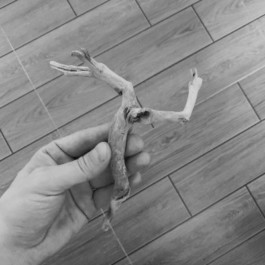



The Ebbinghaus illusion or Titchener circles is an optical illusion of relative size perception. Named for its discoverer, the German psychologist Hermann Ebbinghaus (1850-1909). The two orange circles are exactly the same size; however, the one on the right appears larger.

2
? 9月3日
Experiment#2
MATERIAL EXAMPLES



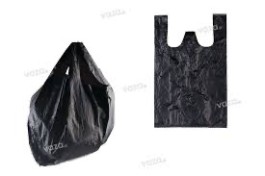

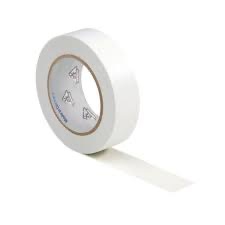
实验二练习感知的力量
提交日期: 2020-09-07 星期一
变色龙-伪装-消失(拍摄你自己/自己的肖像)
选择一个空间。把自己放在图像中,这样你就成为了周围环境的一部分。这意味着你仍然在镜头中可见,但刺激和伪装创造了一个清晰的视觉错觉。 媒介:10-15秒短视频。焦距不移动,透视是固定的。如果它服务于你的伪装和感知,你可以移动你的身体、脸或手指。最小限度的移动。1-2小时的实验和设置创作,然后剪辑成短片作为成果。
伪装实验材料示例:
——颜色纸
——黑白卡纸
——垃圾袋
——黑箔纸
(日常材料,不贵8-)
Experiment #2 Practicing the Power of Perception
Submission due to Monday 2020-09-07
Chameleon - Camouflage - disappear ( ONLY YOU / PORTRAIT )
Choose your space. Position your face within the picture so that you become part of your surrounding. This means your face is still visible within the shot, yet the irritation and camouflage creates a clear optical illusion portrait. Medium: 10-15 seconds black and white landscape video. The video is not moving the perspective is fixed. If it serves your camouflage and perception, you can move your face or parts of your face. Minimal movement. 1-2 hours of experimentation and setting creation, followed by the short clip as an outcome.
Material examples for Camouflage Experiment:
- black & white paper
- garbage bags
- black foil
Etc. ( daily material, not expensive 8-)
Illusions in ART
Illusions in DESIGN


https://tomfruechtl.com








Depiction of how Norman Wilkinson intended dazzle camouflage to cause the enemy to take up poor firing positions
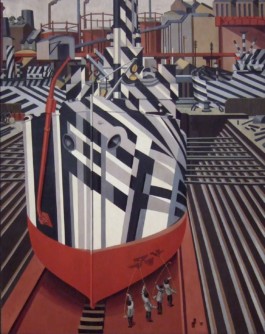



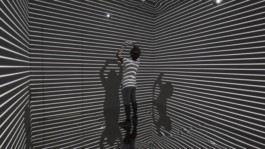







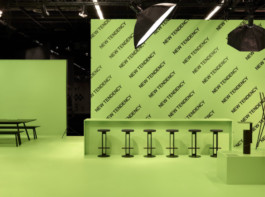








“视觉艺术主要通过眼睛发生”。




«Visual art takes place primarily via the eye». This is a key sentence in a text written in 1975 by Ludwig Wilding, who claimed his work was not Op-Art. The artist forces us to reflect on this term since every creative act which is perceived with the eye is «optical» art. He liked to use the term «irritating art» because in his work he investigated the limits of visual perception. His works question the perceptual habits of the viewer and the interaction between the eye and brain. He was also interested in the interaction with the viewer: it is namely the viewer’s location or movement in space which transforms a flat object into a three-dimensional viewing experience.
Ludwig Wilding is one of the leading personalities of this art form, which, despite the artist’s claims, has established itself in the international art scene as «Op-Art».
错觉出现的目的是什么?
一个错觉的平面/立面是一个伪装?
承诺?
谎言?还是可以净化,使事物变得简洁?
错觉在你的产品设计中会扮演什么样的角色?
视错觉可以作为理解你产品功能性的支持吗?
这是下面一个实验要做的
使用怎样少的信息,以便传达出你产品的核心功能。过滤到最基础的信息以便聚焦到你产品最主要的方面。 你需要展示多少以便解释产品的用途?这个提问的过程是你产品最核心的概念。
What purpose does the illusion serve? Is the illusion of a facade an aspect of a promise, a camouflage, a lie or does it serve as clarification? Does the illusion play a role in your products? Which role does it have? Can an illusion support the understanding of your product’s functionality?
That’s the next experiment.
How little visual information can you apply in order to communicate the core functions of your product? Filtering down to the basics of your primary focal aspects. How little do you need to show in order to explain the products purpose? The process of questioning the core concept of your products.

Experiment#1
在家里或到室外去捕捉错觉。
1. 建筑中的错觉
2. 自然界中的错觉
3. 技术的错觉
(技术中的错觉可以是物体、材料、汽车、音响设备等。找到物体是如何适应周围环境的 消失或融合)
在建筑、自然和技术这三个主题中,仔细观察你周围的事物,发现建筑、图案、物体、动物、树叶等是如何通过视错觉消失或融合的。拍三张照片在这3个主题中。想想知觉上的刺激和困惑——相机的角度和光线是如何影响你的拍摄的?
使用媒介: 摄影。3张图片。不要滤镜 不要photoshop
照片拍成横向格式的,不一定是16:9的,Dali老师和susu老师会进行剪裁
Work from your home or go outside and capture Illusions.
1. Illusions in Architecture
2. Illusions in Nature
3. Illusions in Technology
Look closely, observe your surrounding and find how buildings/patterns/objects/animals/leafs etc. are disappearing / merging through optical illusions in the 3 topics architecture, nature and technology. Take 3 pictures of those 3 focus areas. Think about perceptual irritation and confusion—how can the angle of your camera and the light impact your capture?
Medium used:
Photography. Take 3 pictures. No filter. No photoshop. Only photography. landscape format.
1. 建筑中的错觉
1. Illusions in Architecture





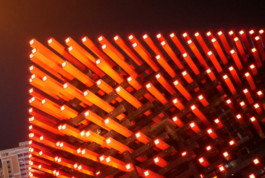


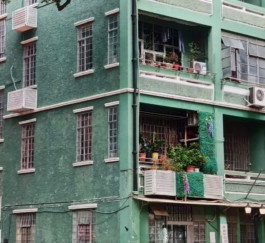











2. 自然界中的错觉
2. Illusions in Nature


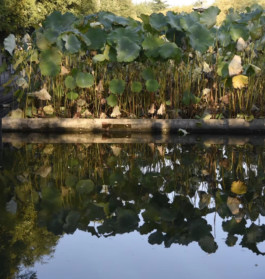








3. 技术的错觉
3. Illusions in Technology








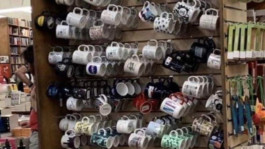

孟菲斯集团 1980年代
视觉: 孟菲斯集团设计的产品大多以视觉冲击为主,对现代主义的功能主义考虑最少。
功能: 很少考虑所设计产品的功能。比起考虑产品的功能性与操作,他们的设计被视为艺术品或是一种设计声明
市场/目标市场: 针对画廊和富人的设计。
1984年丹尼·莱恩的伊特鲁里亚人椅就是一个很好的例子。(Etruscan Chair)
生产规模: 单件或非常小的比例。针对艺术画廊或富有的个人客户。这些产品是由熟练的工匠生产,而不是在流水线上生产的。
材料: 通常使用材料不考虑实际用途。例如,玻璃是伊特鲁里亚人椅子的主要材料。一种坚硬的、易碎的、不灵活的材料,但一般椅子用于实际情况需要更柔软、灵活、吸收冲击的材料(如天然木材)的产品。因此,孟菲斯的设计缺乏功能性。而选用新材料是为了具有视觉冲击力。
现代主义 包豪斯 20年代到30年代
视觉上: 简洁的设计,产生“更纯粹”的设计形式
功能: 功能和形式是现代主义理想的核心。设计保持简单,与艺术作品带来的驱逐从最终产品
市场/目标市场: 针对普通大众市场的,虽然最著名的设计如MB-118椅子(1928年)已经成为收藏品
生产规模: 大规模生产。使用工业技术大规模生产的设计。例如MB-118椅子。这把钢管椅是在生产线上完成的。通过工程和钢铁厂所采用的成型技术制造的。
材料: 现代主义促进了钢管等材料的使用,这个以前不被认为适合做家具的材料。钢管重量轻,用途广泛,价格便宜。它可以以不同的方式连接、制作和成型,开辟了新的设计可能性。新材料的应用增强了产品功能。例如MB-118椅子
MEMPHIS GROUP 1980s
VISUAL IMPACT: Most of the products designed by this group relied on visual impact, with minimum regard for the functionalism of modernism.
FUNCTIONALITY: Little regard given to the function of the product being designed. Products regarded as art work or a design statement, rather than functional / working products.
MARKET / TARGET MARKET: Designs aimed at art galleries and rich individuals. A good example is the Etruscan Chair by Danny Lane 1984.
SCALE OF MANUFACTURE: One Off or very small scale. Aimed at Art Galleries or rich individual clients. These products were manufactured by skilled individuals rather than on a production line.
MATERIALS: Often materials applied to unusual practical situations. For example, glass is the main material of the Etruscan Chair. An unlikely, brittle, inflexible material applied to a product that realistically needs a softer, flexible, impact absorbing material such as natural woods. Consequently, Memphis designs lack functionality. New materials used for visual impact.
MODERNISM / BAUHAUS 1920s -30s
VISUAL IMPACT: Simplicity of design, producing a ‘purer’ form of design
FUNCTIONALITY: Function and form central to modernist ideals. Designs kept simple, with artistic work bring banished from the final product
MARKET / TARGET MARKET: Designs aimed at the general public, although the best known designs such as the MB-118 CHAIR (1928) have become collectors items in their own right
SCALE OF MANUFACTURE: Mass production. Designs manufactured on a large scale, using industrial techniques. For example, the MB-118 Chair. This tubular steel chair was manufactured on a production line, through techniques employed in engineering and steel works, forming steel.
MATERIALS: Modernism promoted the use of materials such a tubular steel. Materials that had not been previously considered as a suitable for furniture. Tubular steel is light, versatile and cheap. It can be joined, shaped and formed in different ways, opening up new design possibilities. New materials used to enhance the function of the product. For example the MB-118 Chair.
孟菲斯集团(后现代主义)产品设计原则
- 强调美学,形状和造型。设计通常被流行趋势所影响。
- 不同时代的风格,混合形成设计或产品。
- 通常“孟菲斯”设计是争议性的。
- 普遍使用日常的材料像中密度板,玻璃,金属和石材。这些原则来自于包豪斯和现代主义。
- 但是在材料使用上和通常产品使用的材料是不相关联的。(1984年丹尼·莱恩设计的伊特鲁里亚人椅子the Etruscan Chair )玻璃椅子。
- 大部分的设计是单件或者很小批量的生产。
- 可以看出设计中结合了手工技能。比如精确的工程制造结合高质量的个人手工艺。
- 比起一件功能性的物品,孟菲斯设计更被视作为一件艺术品。
MEMPHIS GROUP ( POST MODERNIST) PRODUCT DESIGN PRINCIPLES
- Emphasis placed on aesthetics, shape and form. Designs often influenced by fashionable trends.
- Styles from different ages, mixed to form a design/product.
- Often ‘Memphis’ designs are controversial.
- Use of common, everyday materials such as MDF, glass, steel and stone. This principle was shared with the Bauhaus and Modernism.
- Often materials used that are normally not associated with the product. (E.G. the Etruscan Chair designed by Danny Lane 1984). Glass chair.
- Most of their designs were One Offs or for very small scale production.
- A combination of craft skills often displayed. For instance, accurate engineering combined with high quality individual craft work.
- Memphis designs can be regarded as works of art, rather than functional objects.

时间表:
2020-09-3,4 (周四和周五)
视频会议:13:30-18:00 介绍、准备、分享应用(APP)、技术的补充
1. 9月3日 星期四 17:00 提交任务
学生把介绍的 PDF 发送到微信群里面,内容包括:
- 姓名 / 自己的照片
- 学期 + 专业
- 选择一个你之前做的满意的产品。找最多5张产品图片,产品名称,简短的产品描述
2020-09-7 -11 (周一至周五)
作业/实验 + 反馈视频会议:13:30-18:00
- 我们与你讨论任务 / zoom视频反馈。
- 作业/实验内容 也将上传到博客上。
- 1对1或5人一组 作业反馈和视频会议,持续到 18:00。
- 每天1个作业/实验,反馈和讨论会议 + 第二天的新作业/实验。
Timeline
2020-09-3—4 (Thursday & Friday)
Video Conference: 13:30—18:00
Introduction, Preparation, Sharing Apps, Technical updates
1. Task Submission on Thursday, Sep. 3rd at 17:00
Send us your Student Profile PDF into the wechat group
- Name + b/w photo of yourself
- Semester & major
- Choose one of your favorite previously designed products and add
Max. 5 Product Pictures, Product name, Product description ( short )
2020-09-7—11 (Monday to Friday)
Assignments / Experiments + Feedback Video Conference: 13:30—18:00
- We discuss assignments / experiments with you on video call.
- Assignments / experiments will also be uploaded on the blog.
- 1 on 1 or groups of 5 feedback and discussion round video conference availability until 18:00.
- 1 assignment / experiment per day, feedback and discussion session + new assignment / experiment next day.
实验概述:
你能更好地理解世界通过视错觉吗?
对于接收者而言视觉刺激是一种更好理解事物构成(构图)的工具吗?
图形设计在未来将不复存在。相反,我们开始培养不可估量的人。一极由社会学、哲学、人类学、心理学(人文主义研究)组成,另一极则呈现艺术与技术(数字时代创新即将出现)。
设计思维 流程—方法
通过连接和结合4个维度x,y,z和声音,音乐作为第四维度来理解人类世界。2D呈现事物的高和宽,3D显示空间的深度,出现产品,4D引入了声音元素并形成音乐。
最终实验的产出结果:
学生的任务是混合这4个维度。
他们被要求选择他们以前设计的产品之一,并将它融入到实验中。
实验致力于一个视觉错觉构成的作业挑战 – 在一段音乐的帮助下 - 是由视频/摄影图形集合的最终结果组成。
什么是实验?
实验是专注处理任务而不是结果,重点是这个过程。实验永远不会错,没有对错。不同的方法和问题导致不同的方式、见解和解决方案。这种没有限制的试验被评估的方式是通过观察、考察和探索。
所有学生的作业成果将被收集起来,我们将音乐维度与感觉的维度相结合。汇编每个学生30秒的音轨加上视频文件,最终形成一个带有视错觉的音乐电影
感知-练习工作流程 [创造错觉]
1. 近 [远] [深度感知]
2. 距离 + 比例 [聚焦]
3. 视觉刺激和视觉疲劳 [攻击你的眼睛]
4. 音乐视频 / 移动图像 [感知融合]
Experiments Overview
Can you better understand the world through the eye of illusion?
Is irritation a tool for recipients to better understand the composition?
Graphic design as such will no longer exist in the future. Instead, we start cultivating the unmeasurable. One pole consists of sociology, philosophy, anthropology, psychology ( humanitarian studies ) while the other pole presents art & technology ( the forthcoming of innovation in the digital age ).
Design thinking processes—the methodology
Understanding the human world through connecting and binding together the 4 dimensions x, y, z where ( sound ) music makes up the 4th dimension. 2D presenting a display’s hight and width, 3D showcasing the depth of space and the incorporation of of a product , 4D introduces the element of sound hence music.
Experiment final outcome
The students are given the task of blending the 4 dimensions.
They are asked to chose one of their previously designed products, which will be integrated in the experiment.
The experiment is dedicated to the challenge of a composition in which an optical illusion - with the help of a piece of music - is composed through the collective final outcome of a video/photographic-graphic work.
What is an experiment?
The experiment is dedicated to the task and not the result. The focus is on the process. An experiment is never wrong. Different approaches and questions lead to different ways, insights and solutions. There are no limits the experiments are evaluated according to observation, examination and exploration.
All student’s outcomes will be collected and we combine the music dimension with the felt dimension. A compilation of 30 second chapters of the music track for each student’s visual outcomes will form the collective outcome of one final optical illusion music video film.
Perception-Exercises Work Flow «Create an illusion»
1. Near & far «Deep sensations»
2. Distance & proportion «In focus»
3. Irritation & exhaustion of the eye «Attack your eyes»
4. Music Video / Moving Image «Perception Fusion»

1
? 9月1日








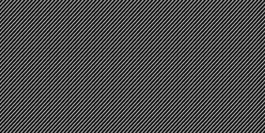



1 眼睛- 感知适应
2 向路德维希·怀尔丁(Ludwig Wilding)致敬“恼人的艺术”(“IRRITATING ART”)
3 介绍
1. The Eye—Perceptual Adaption
2. Homage to Ludwig Wilding «irritating art»
3. Intro
1 眼睛
知觉适应
虽然眼睛是我们知觉设备的一部分,但是知觉的过程发生在眼睛和大脑之间,是一个复杂的交互过程。知觉的过程不是静态的而是随着时间的推移而变化,无论个体还是社会。人天生具有视觉、味觉、听觉、嗅觉和触觉等知觉工具。
所有这一切都在瞬间发生。光线被转换成电信号,通过眼睛后部的视神经传到大脑。你的大脑处理这些信号,瞧!你可以看到它!
知觉适应理论
也许你的大脑和眼睛之间最有趣(也最疯狂!)的关系就是所谓的“知觉适应”。这基本上意味着,如果你开始用不同的方式看待事物,你的思维就会适应,所以你会看到你通常会看到的东西。我们可以把它看作是一个拼图游戏。你的眼睛收集到的信息是碎片,然后你的大脑将其全部排列,这样你就能正确地看到。
现在,会发生什么,如果你的眼睛开始收集不同的信息,而你看的东西是一个角度的。最初,你的视野会是一个角度,这让你的日常生活充满挑战。然而,你的大脑随后会适应,通过考虑角度的不同来矫正你的视觉,让你重新看到不同的东西。
1. THE EYE <o>
Perceptual Adaption
Although eyes are part of our sensory equipment, perception is a process that occurs in the complex interactions between eye and brain. Perception is not static–it changes in the individual over time, and within society. People are born with sensory tools such as sight, taste, hearing, smell and touch.
All of this takes place in just a fraction of a second. The light is transformed into electrical signals, which travel through the optic nerve at the back of the eye to your brain. Your brain processes these signals, and voila! You can see it!
The Theory of Perceptual Adaption
Perhaps the most interesting (and crazy!) relationship between your brain and eyes is what’s called «perceptual adaption». This essentially means that if you start seeing things differently, your mind will adapt, so you see what you usually would. One way to look at this is as a jigsaw puzzle. The information collected by your eyes are the pieces, and then your brain arranges it all, so you see correctly.
Now, what would happen if your eyes started collecting information differently, so you see things at an angle? Initially, your vision would be at an angle, making it challenging to go about your day-to-day life. However, your brain would then adapt, correcting your eyesight by accounting for the difference in perspective, and allowing you to see again.

2 向路德维希·怀尔丁(Ludwig Wilding)致敬 “恼人的艺术”(“IRRITATING ART”)
路德维希·怀尔丁1927年出生在格伦施塔特(普法尔茨),2010年死于吕内堡希思的布赫霍尔兹。
“视觉艺术主要通过眼睛发生”。这是路德维希·怀尔丁1975年写的一篇文章中的关键一句话,他声称自己的作品不是“光效应艺术”(Op-Art)。艺术家迫使我们反思这个术语,因为在此之前每一个用眼睛感知的创造性行为都是“光效应艺术”(Op-Art)。他喜欢使用“恼人的艺术”(irritating art)这个术语,因为在他的作品中,他研究了视觉感知的局限。他的作品质疑观者的感知习惯和眼睛与大脑的互动。他也对与观者的互动感兴趣:即观者的位置在空间中运动,由此把一个平面物体变为3维物体的这样一种视觉体验。
路德维希·怀尔丁是这种艺术形式的先驱者之一,尽管这种艺术形式已经在国际上以“欧普艺术”(“Op -Art”)确立了自己的身份。
2. Homage to Ludwig Wilding «irritating art»
Ludwig Wilding was born in Grünstadt (Palatinate) in 1927 and died in Buchholz in the Lüneburg Heath in 2010.
«Visual art takes place primarily via the eye». This is a key sentence in a text written in 1975 by Ludwig Wilding, who claimed his work was not Op-Art. The artist forces us to reflect on this term since every creative act which is perceived with the eye is «optical» art. He liked to use the term «irritating art» because in his work he investigated the limits of visual perception. His works question the perceptual habits of the viewer and the interaction between the eye and brain. He was also interested in the interaction with the viewer: it is namely the viewer’s location or movement in space which transforms a flat object into a three-dimensional viewing experience.
Ludwig Wilding is one of the leading personalities of this art form, which, despite the artist’s claims, has established itself in the international art scene as «Op-Art».

3 介绍
当你的眼睛慢下来观察时会发生什么?
知觉的减速,而音乐作为减速的一种手段。通过放慢感知,焦点会增加,从而促进生产。你最终的作品将是一段剪辑视频,把你个人所有单个视频剪辑到一起。你们可以组队,最多两个人。每一次课程中我们将放一个小片段,给你们介绍一个新的感知的角度。
我们使用的这种技术一般被用来传达复杂性。它不是一个简单的知觉活动,通过放慢让你来理解细节。如果你分析的信息你的眼睛所察觉的时间越长,在头脑中你理解的这个对象就会越好。而且你会找到一个在物体之间的新的联系。当你花费越长的时间去思考你看到了什么,你就会创造一种视觉动机,它不是一种结果而是一个过程,关于你个人的感知,分析,观察的过程,而这种过程会导致不同的结果。伴随着快速的结果,空的,重复性的,普通的结果的出现,而这种结果咋一看不是我们人类对社会的一种新贡献。每个个体他的观察和视角都是不一样的,也因此而独特。因此这种复杂性使其变得更有深度,而模糊的视觉确成为了一种优势。为什么?科技的发展速度呈指级增长,而现在我唯一的角色不是去追上机器的速度,而是慢下来去理解世界。一个(机器)专注于信息的数量,而另一边(人类)专注于思考的游戏。这意味着我们的时间花在了致力于信息上。质量代替数量,慢代替快,少代替多,本质代替繁杂。我们的角色是把加密和解密作为一个设计任务,一种视觉游戏。琐碎是数字工具的关键。处理信息的关键是传达信息。一个有着高度复杂性的品牌远比一个只包含普通视觉信息(字体,颜色,图片等等)的品牌有意思。它像一首诗,通常在第一眼看到时总是很难理解。同样,爱情也是复杂和不容易的。
你将在课上构想一系列的任务,通过这些任务实验和质疑自我的意义,空间的意义以及视错觉技术的不同效果。我们将穿过艺术设计与科技最高光的时期,聚焦于视错觉技术发展的时期,带领我们来到数字时代,在这里你们将运用不同的工具产出多样的数字成果。例如,我们将通过APP去进行的光学错觉伪装练习。
目标是理解和掌握设计过程的重要性和设计思维工具的应用,以便掌握未来一代的创新和沟通工具。
3. Intro
What happens when our eyes slow down and observe?
Slowdown in perception and a connection to music as a tool. Examining options within the tool. Your final project will be individual videos coming together as one video clip. You may work in groups of 2 max. A video will be presented to invite you to each of the workshops. Introducing to you a new angle of perception.
The technology we use is used to convey complexity. It is not a simplification of perception, by slowing down you understand the details, if you analyze the information your eyes percieve longer in your head you understand individual objects better and also find new connections between the objects, the longer you take time to think about what you see, you create a kind of visual motivation, it is not about the result but about the process of the individual perceptions and analyzes, observations, which may ultimately lead to different results. With quick results, empty or more repetitive and ordinary results arise, what our human eye perceives at first glance is not a new contribution to our society. Every single person and their perception and perspective is different and therefore unique. Therefore the complexity enables more depth, not the clarity of the visual explicit is the advantage. Why? The speed of technology is growing exponentially. The only role as humans we have now is not to assume the speed of the machine, but to use the slowness or deceleration to understand the world. One is dedicated to the quantity of information and the other is dedicated to the game of thoughts. That means time is devoted to information. Quality instead of quantity. Instead of fast, slow. Instead of a lot, less. Instead of mass, essence. Our role is encryption and decryption as a design task. A visual game. Triviality as the key to digital tools. Dealing with information is the key to conveying information. A brand with a high level of complexity is more interesting than a brand that deals with common visual issues such as typo, color, photo, etc. It is like poetry, which is usually difficult to understand at first glance. Love is complex and not easy.
You are invited to conceive a series of tasks through which you will be experimenting with and questioning the meaning of the self, the meaning of space and the different effects of optical illusion techniques. We go through the highlight periods of art + design & technology, with focus on the evolution of optical illusion technique periods leading up to our digital age where you will be using several applications to exercise diverse virtual outcomes. For example an optical illusion camouflage exercise via AI exploring and applying the deception of the century.
The goal is understanding and mastering the importance of design processes and the application of design thinking tools in order to master the generation of future innovation and communication tools.











WE ARE BASED
SHANGHAI
– SPECIALIZING IN BRAND STRATEGY, ART DIRECTION, DESIGN AND PRODUCTION ACROSS ALL PLATFORMS.
FOR INQUIRES DO NOT HESITATE TO CONTACT US AT SALMA AT GONDOR.DE OR DARIUS AT GONDOR.DE
© 2003–2025 GONDOR DESIGN CULTURE. The copyright for the content of this page is held exclusively by the designer. All rights reserved. No part of this website content may be reproduced or transmitted in any form or by any means, electronic or mechanical including photocopy or any storage and retrieval system, without permission in writing from the publisher.

➸ darius at gondor.de

WE ARE BASED
SHANGHAI
– SPECIALIZING IN BRAND STRATEGY, ART DIRECTION, DESIGN AND PRODUCTION ACROSS ALL PLATFORMS.
FOR INQUIRES DO NOT HESITATE TO CONTACT US AT SALMA AT GONDOR.DE OR DARIUS AT GONDOR.DE
© 2003–2025 GONDOR DESIGN CULTURE. The copyright for the content of this page is held exclusively by the designer. All rights reserved. No part of this website content may be reproduced or transmitted in any form or by any means, electronic or mechanical including photocopy or any storage and retrieval system, without permission in writing from the publisher.
➸ darius at gondor.de

